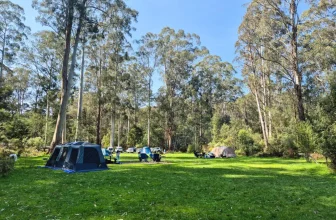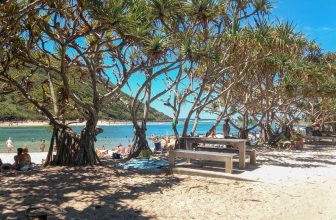
Peter Ollerton wasn’t initially impressed by his first sight of Wembley Park in 1971. In fact, he was so disappointed he wanted to go straight home. This particular Wembley was the home of Melbourne club Wilhelmina, whom the Lancashire-born Englishman had just signed for.
was so disappointed he wanted to go straight home. This particular Wembley was the home of Melbourne club Wilhelmina, whom the Lancashire-born Englishman had just signed for.
With the very name of Wembley synonymous with pomp and ceremony, the 19-year-old turned up on his first day suitably attired.
“I went to Ringwood [a suburb of Melbourne] for my first game with a shirt and tie and I was surprised to learn that Australia’s ‘Wembley’ was basically nothing more than a flat park with no stands and a tin shed for dressing-rooms. All the players turned up in T-shirts and shorts,” he told SBS Sports in 2019.
Ollerton decided to stay and was playing so well for Wilhelmina that he was selected the following year for the state of Victoria’s game against Pelé’s visiting Santos. His performance that day earned him a trial with Sydney side APIA and he moved north to join them.
Two years later, Ollerton was doing what Pelé wasn’t – playing in the 1974 World Cup for his newly adopted country. The midfielder had spent the first three years of his career with Fleetwood Town and he would be joined in Australia’s 1974 World Cup qualifying campaign by another former Fleetwood player in Adrian Alston. Like Ollerton, Alston was coaxed to warmer climates by a scout who wanted to bring over hard-working and dependable players who could raise professional standards down under.
With the experienced Yugoslav Rale Rasic at the helm, the Australians embarked on a remarkable run in the World Cup qualifying campaign during 1973, initially overcoming New Zealand, Indonesia and Iraq in their Asia-Pacific group to set up a semi-final against Iran. The Iranians were without their injured star man Ali Parvin and the Socceroos took full advantage, winning the first leg in Sydney 3-0.
But in the baking heat of Tehran in front of 120,000 vociferous fans, the Australians slipped two goals behind before half-time and seemed on course to suffer a monumental collapse. Somehow, they held out in the second-half to narrowly progress 3-2 on aggregate.
That set up a winner-take-all play-off against South Korea and the first leg at home finished in a scoreless draw. In Seoul the Australians fell two goals behind within half an hour and the tie seemed to be going in only one direction. But a minute after the Koreans’ second, Branko Buljevic pulled one back, and shortly after the start of the second half Ray Baartz equalised. The away goal rule wasn’t used so a decider was held in neutral Hong Kong three days later.
It took one goal and two Scotsmen to decide it with former Peterborough and Montrose midfielder Jimmy Rooney laying the ball off for Jimmy Mackay to smash it into the top right corner from 35 yards.
Ollerton only came into the national squad in early 1974 for two warm-up matches.
“I was scoring every week for APIA and one day out of the blue I got a call inviting me to train with the Socceroos who were preparing for a two-match series against Uruguay. I was not naturalised then but I was told not to worry about it and in fact after a couple of days I learned I had become an Australian without going to any ceremony or anything like that. I just signed some forms.”
He came on as a substitute in the second half of the first game in Melbourne, a drab goalless affair. But he started the subsequent encounter in Sydney and scored Australia’s second to secure a 2-0 win in a brutal encounter.
Australia’s squad was the most cosmopolitan at the 1974 finals. There were six ‘poms’ – Ollerton, Alston, the captain Peter Wilson (ex Middlesbrough), Ray Richards (who moved over when he was 16), Dave Harding (ex-Wrexham) and John Watkiss (who moved to Australia as a child). Alongside that sextet were three Scots, three Yugoslavians, one German, one Hungarian, an Irishman and six Australian-born players. The local contingent included Harry Williams, the first indigenous footballer to play for Australia. It also included Johnny Warren, the first bona fide football superstar in Australia, for whom the best player of the A-League season award is still named after.
The Socceroos were drawn against the hosts West Germany, East Germany and Chile. After enduring a baptism of fire in a 2-0 defeat to the GDR, the green and golds came up against the feted West Germans on 14 June 1974 in Hamburg. It is a day that midfielder Jimmy Rooney will never forget.
“I was walking out on to the pitch in Hamburg and I look up and there’s Franz Beckenbauer, Uli Hoeness, Berti Vogts, Gerd Muller, Sepp Maier and Paul Breitner. What superstars they were at the time. It was just an incredible feeling to be playing such legends, and it was a magnificent stadium with every seat taken,” says Jimmy Rooney.
The West Germans, of course, would go on to win the World Cup on home ground, beating the favoured Dutch and their ‘total football’ style in the final. West Germany raced to a two goal lead by half-time and added a third in the second half.
“Three-nil isn’t too bad when you look at the calibre of the opposition. They were all professionals, the billionaires of their time and we were paupers earning almost nothing. Jack Reilly [the goalkeeper] still has his cheque from that tournament, he didn’t cash it in,” says Dundee-born Rooney.
Australia finished the campaign with a scoreless draw against Chile, their first-ever point at a World Cup finals. Their official mascot was a colourful character named Jim Scane who became their twelfth man. Wearing a green and gold suit that displayed the Socceroos players’ names, Scane led the team out onto the field holding a toy Koala in one hand and a Kangaroo in the other and instantly became a cult figure.
Despite the success in getting the team to the finals, Rale Rasic was dismissed and the players were told of his sacking as they were coming off the plane at Sydney airport. Australia wouldn’t qualify again for the finals until 2006.









